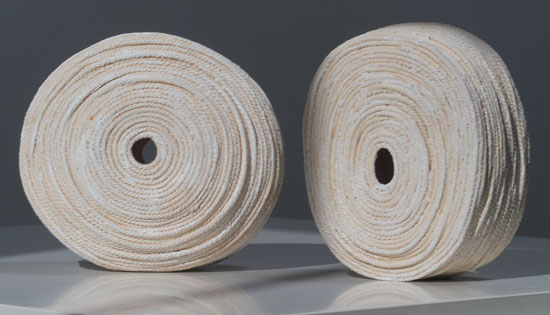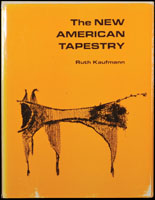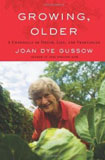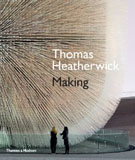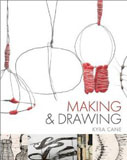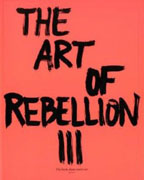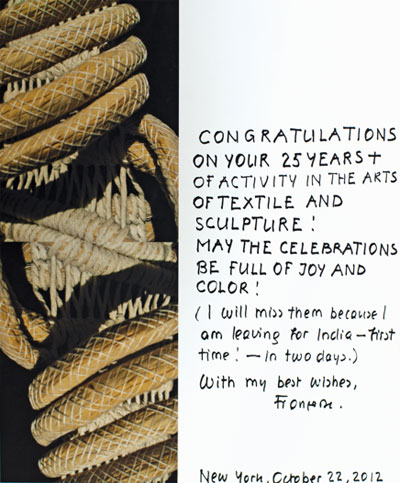More book recommendations from artists and us.
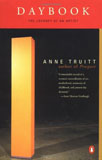

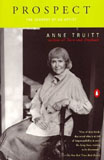 “There are a series of books, journals, Daybook, Turn, and Prospect, by Anne Truitt, the minimalist sculptor,” Mary Merkel-Hess writes, “that were important to me when I was a young artist. In a marvelously lucid way, Anne Truitt wrote about her life in the studio, her marriage, children, and making a living at art. Particularly interesting to me was her discussion, in her first book, about turning away from a life of doing ‘good’ in the world (she studied clinical psychology and worked as a nurse) to become an artist.”
“There are a series of books, journals, Daybook, Turn, and Prospect, by Anne Truitt, the minimalist sculptor,” Mary Merkel-Hess writes, “that were important to me when I was a young artist. In a marvelously lucid way, Anne Truitt wrote about her life in the studio, her marriage, children, and making a living at art. Particularly interesting to me was her discussion, in her first book, about turning away from a life of doing ‘good’ in the world (she studied clinical psychology and worked as a nurse) to become an artist.”
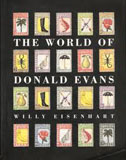 Nancy Moore Bess, recommends The World of Donald Evans by Willy Eisenhart. “I had purchased some bookmarks with his watercolor ‘stamps’ and was excited to see a book about him. His work is visually so rich and really reflects his life…which tragically ended in a fire at his studio in 1977. If you ever find a copy, curl up with it yourself.”
Nancy Moore Bess, recommends The World of Donald Evans by Willy Eisenhart. “I had purchased some bookmarks with his watercolor ‘stamps’ and was excited to see a book about him. His work is visually so rich and really reflects his life…which tragically ended in a fire at his studio in 1977. If you ever find a copy, curl up with it yourself.”
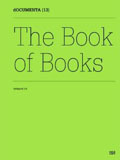 For Heidrun Schimmel, Documenta 13, was one of the best ‘documenta’ exhibitions and the publications — there are three — give a great deal of information about the art scene, the questions and problems of our world. Documenta 13’s Artistic Director Carolyn Christov-Bakargiev described the 2012 festival as “choreographing many different kinds of materials, methodologies and forms of knowledge.” One of the three publications, Documenta 13: The Book of Books reproduces the entire 100 Notes – 100 Thoughts series of publications (either as facsimiles or with entirely new layouts), and is supplemented by essays from Carolyn Christov-Bakargiev, Chus Martínez, Franco Berardi and others, plus statements by some of the festival’s agents and advisors. Heidrun also recommends
For Heidrun Schimmel, Documenta 13, was one of the best ‘documenta’ exhibitions and the publications — there are three — give a great deal of information about the art scene, the questions and problems of our world. Documenta 13’s Artistic Director Carolyn Christov-Bakargiev described the 2012 festival as “choreographing many different kinds of materials, methodologies and forms of knowledge.” One of the three publications, Documenta 13: The Book of Books reproduces the entire 100 Notes – 100 Thoughts series of publications (either as facsimiles or with entirely new layouts), and is supplemented by essays from Carolyn Christov-Bakargiev, Chus Martínez, Franco Berardi and others, plus statements by some of the festival’s agents and advisors. Heidrun also recommends 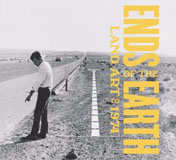 Ends of the Earth, Art of the Land to 1974, by Philipp Kaiser, Miwon Kwon, Tom Holert and Julian Meyers. The companion exhibition is at Haus der Kunst, Prinzregentenstraße 1 in Munich,
Ends of the Earth, Art of the Land to 1974, by Philipp Kaiser, Miwon Kwon, Tom Holert and Julian Meyers. The companion exhibition is at Haus der Kunst, Prinzregentenstraße 1 in Munich,
Germany through January 20, 2013. “I think this exhibition is very important for anyone who is working with ‘material as matter,’ perhaps especially for artists of my generation who remember this revolution in art history.”
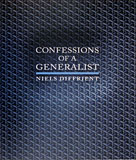 I am thoroughly enjoying Confessions of a Generalist, by Niels Diffrient, as I have a few moments to read amidst holiday prep and end-of-year items. Niels is a friend, the spouse of tapestry artist Helena Hernmarck and designer of the Freedom, Liberty and World ergonomic chairs. His is a remarkable journey — from a Mississippi farm to Cranbrook to Italy, to work with Eero Saarinen, Buckminister Fuller, Henry Dreyfuss and for Edwin Land, on every every type of equipment, as well as computers, exhibits, trucks, airplane interiors and corporate identity programs. The book is lavishly illustrated and captioned and Niels succeeds in his aim of creating a “communication product,” that closely relates words and pictures, both physically and intellectually, and approximates “the way we experience reality with both our intellect and senses.”
I am thoroughly enjoying Confessions of a Generalist, by Niels Diffrient, as I have a few moments to read amidst holiday prep and end-of-year items. Niels is a friend, the spouse of tapestry artist Helena Hernmarck and designer of the Freedom, Liberty and World ergonomic chairs. His is a remarkable journey — from a Mississippi farm to Cranbrook to Italy, to work with Eero Saarinen, Buckminister Fuller, Henry Dreyfuss and for Edwin Land, on every every type of equipment, as well as computers, exhibits, trucks, airplane interiors and corporate identity programs. The book is lavishly illustrated and captioned and Niels succeeds in his aim of creating a “communication product,” that closely relates words and pictures, both physically and intellectually, and approximates “the way we experience reality with both our intellect and senses.”

